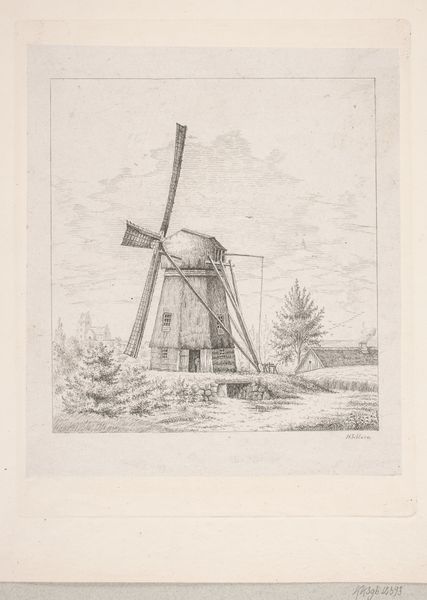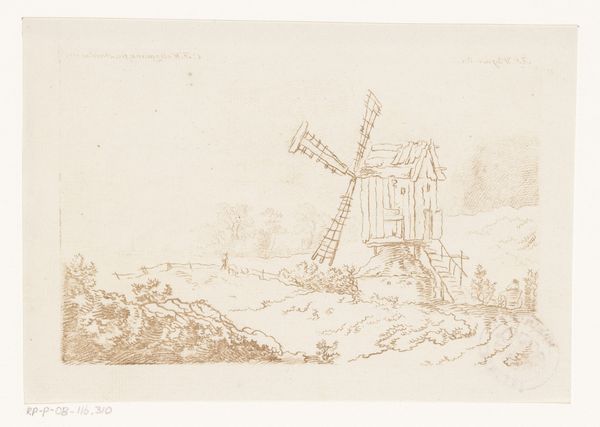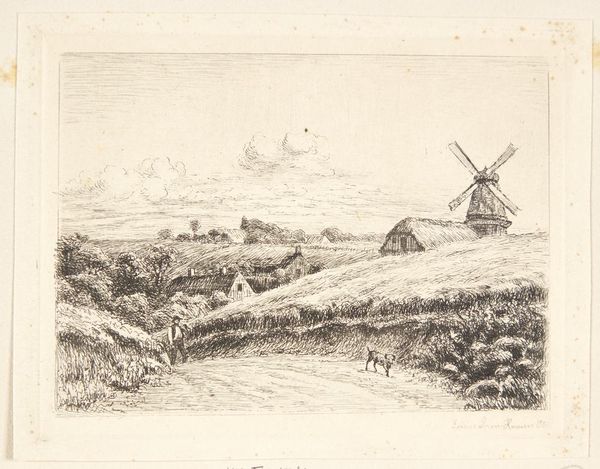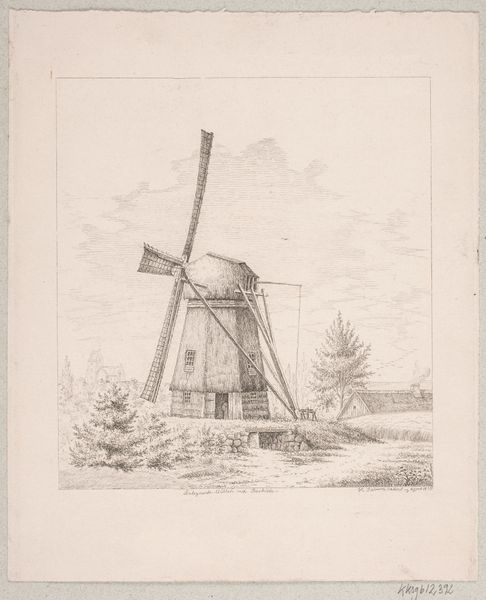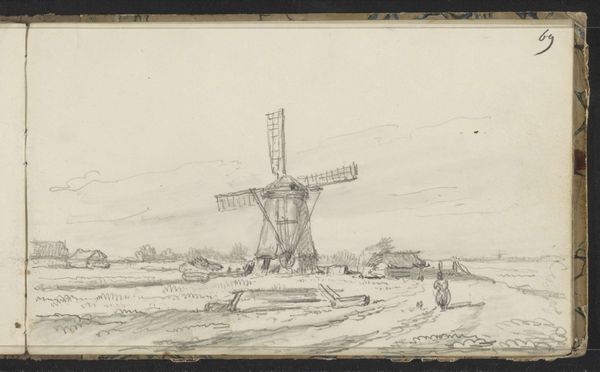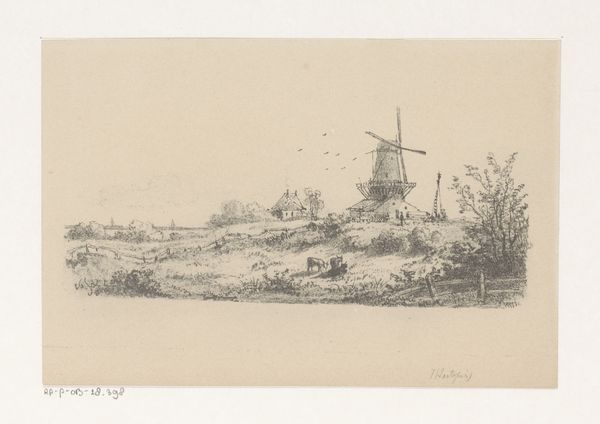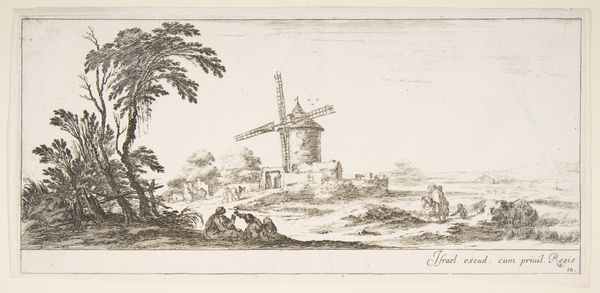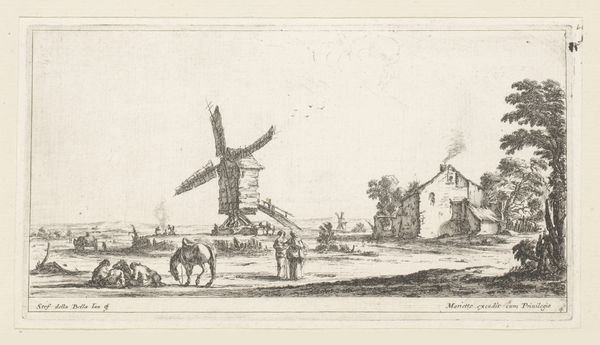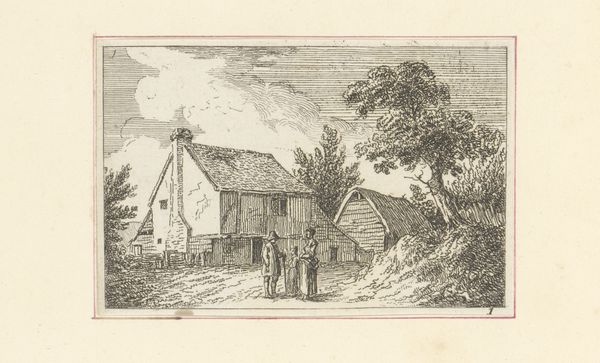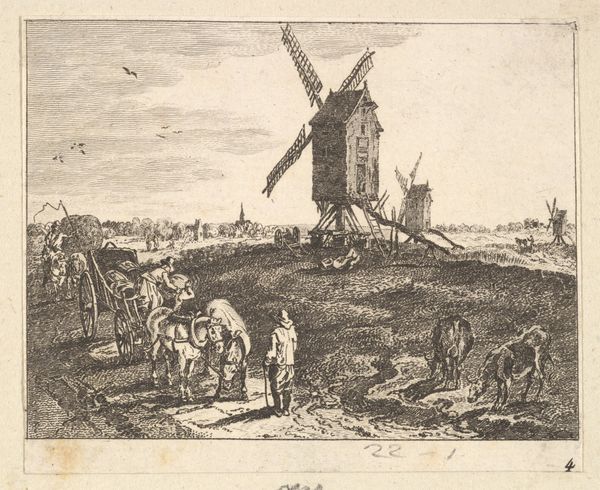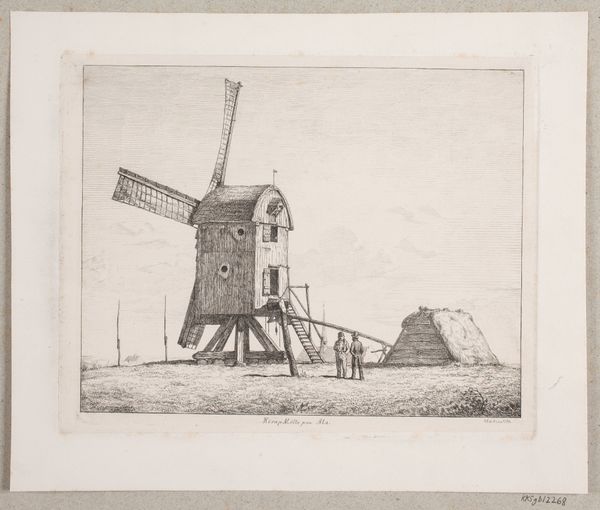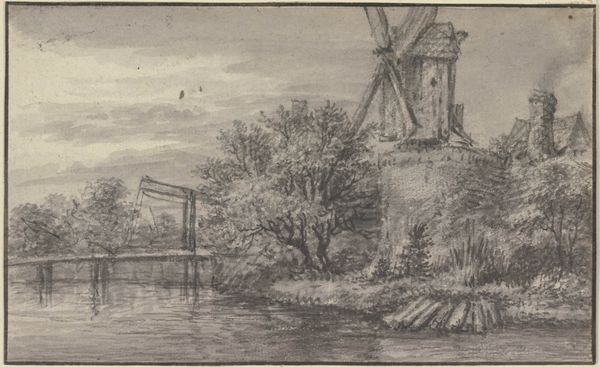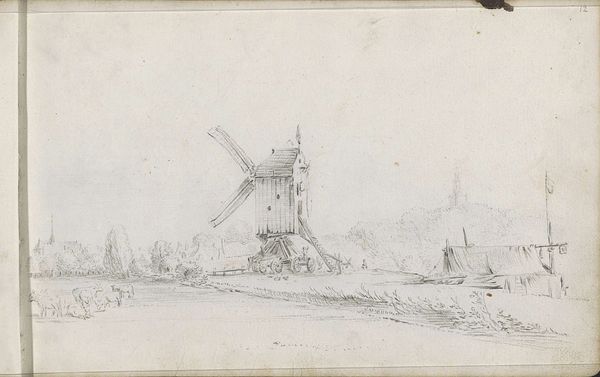
Dimensions: height 107 mm, width 166 mm
Copyright: Rijks Museum: Open Domain
Curator: This is Carl Friedrich Holtzmann's "Landscape with a Mill," etched in 1771. It's a scene that speaks to the prevailing Romantic aesthetic of its time. Editor: My first thought is: this evokes such a quiet stillness. The sepia tones, the figure seated on the embankment, the lonely walker along the ridge – there’s an undeniable sense of reverie here. Curator: Absolutely. The windmill itself acts as a potent symbol. Traditionally, windmills represent industry and progress, but in this composition, its slightly dilapidated state and integration into the natural landscape imbues it with a nostalgic, perhaps even melancholic, quality. What connections can you draw between this piece and issues of sustainability and identity? Editor: The etching makes me think about community. Windmills, historically, were communal resources – they offered power for entire villages. So, by portraying a somewhat faded mill, Holtzmann might also be subtly commenting on shifts in the social fabric or the tensions between tradition and modernity. How have changing climates impacted the land since this was created? Curator: I agree, and notice that in addition to progress it serves as a physical link between earth and sky. As the wind drives the mill, consider it a dialogue with something beyond ourselves, be it divine inspiration or elemental energy. Editor: The lone figures seem quite deliberate, don’t they? The two individuals almost bracket the scene and imply movement away from a central locus. It poses the question of what role humankind plays in the natural setting, the way power relations shape these landscapes over time, and if something can ever return. The seated figure has perhaps found a return, whilst the other journeys outward. Curator: I see these as representations of the soul's journey towards enlightenment. There's something timeless in Holtzmann’s visual language – in how the mill becomes a touchstone for contemplating the interconnectedness of all things. Editor: This makes me realize anew how artworks, even from the late 18th century, can spark a relevant conversation about how we want to live, about what we value, and what’s ultimately at stake when these landscapes and identities evolve.
Comments
No comments
Be the first to comment and join the conversation on the ultimate creative platform.
